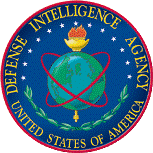United States Department of Defense
Date of this Version
1998
Document Type
Article
Citation
The minimal unambiguous citation for this manual is: FM 34-54, 1998.
Abstract
This manual defines and describes the technical intelligence mission. It names the key technical intelligence organizations involved at the national level and their interrelationships and responsibilities.
The manual describes in detail the technical intelligence organizations and operations in a US command in the field. It discusses at length the responsibilities on the key staff sections in the command.
It has extensive appendices explaining forms and procedures used by forces in the field. It has an excellent list of acronyms and glossary.
Comment by the depositor
A clear understanding of the evolution of technical intelligence may not be needed by the intended audience of this manual, and as far as I know, no comprehensive history exists.
However, supposed historical facts included in an official manual ought to be true. This manual fails in that respect. For example, this paragraph on Page 1-5 is utter nonsense:
Following the Korean War, the United States did not disband its TECHINT capability completely, as had been done at the conclusion of all previous hostilities. But neither did we maintain it at its wartime level. Three small TECHINT detachments remained in place at the Army's research and development centers. By 1962 two of the detachments merged to form the Army's Foreign Science and Technology Center. The third detachment established the Missile Intelligence Agency at Redstone Arsenal. The Surgeon General also operated a Medical Intelligence
Center at Fort Detrick, MD.
At the end of World War II, technical intelligence staffs remained in the offices of the heads of the seven Army Technical Services. Between then and the creation of the Army Foreign Science and Technical Center, many of those staffs were converted into special purpose intelligence agencies as is documented by DA General Orders. The first such agency, the Signal Corps Intelligence Agency was established at Washington, DC, according to Sec. IV, DA GO 39, 18 Aug 49, before the beginning of the Korean War.
Paragraph VIII of DA GO 57, 1962, established the Army Foreign Science and Technology Center and transferred the functions, personnel, records, and equipment of the Chemical Corps, Ordnance Corps, Signal Corps, Transportation Corps, and Quartermaster intelligence agencies to it. In addition Corps of Engineer technical intelligence activities which had been housed in the Army Map Service were transferred to it.
The intelligence section in the office of the commanding general of the Army Missile Command was not recognized as an official intelligence production agency until much later in the 1960s.
The Medical Information and Intelligence Agency, which was not at Ft Detrick, was not affected by the reorganization of the Army intelligence activities outlined in Department of the Army Reorganization Planning Directive 381-2, 18 May 1962, which is available in the UNL Digital Commons at:
http://digitalcommons.unl.edu/usarmyresearch/169/
In fact, the intelligence organization which was formed in the Office of the Surgeon General went through a complicated series of reorganizations before it became the National Center for Medical Intelligence at Ft Detrick.
Robert L Bolin, Associate Professor Emeritus, UNL Libraries
Included in
Defense and Security Studies Commons, Military and Veterans Studies Commons, Other Engineering Commons, Peace and Conflict Studies Commons, Soviet and Post-Soviet Studies Commons



Comments
The digital document was constructed from three sources. One copy of the manual was downloaded from the US Military Manual Collection, a collection of digital documents, on 2 June 2016. Another copy was downloaded from the GlobalSecurity.org website on June 8, 2016. Another copy used was a xerographic copy of the manual borrowed from the Army War College several years age. Interestingly those copies of the manual appear to be slightly different. I assume that the copy from the US Military Manual Collection—which was the primary source—incorporated changes made since 1998.
The manual is included here to guarantee it’s retention as a digital document in the future. This is the 8th field manual on technical intelligence since the first, FM 30-16, Technical Intelligence, issued in 1953. Most are available in the UNL Digital Commons in the DOD Military Intelligence collection which is at:
http://digitalcommons.unl.edu/dodmilintel/
This manual superseded FM 34-54, 5 April 1999, which is available in the UNL Digital Commons at:
http://digitalcommons.unl.edu/dodmilintel/87/
Since the army reuses manual titles and numbers, it is necessary to include the date when describing any given manual.